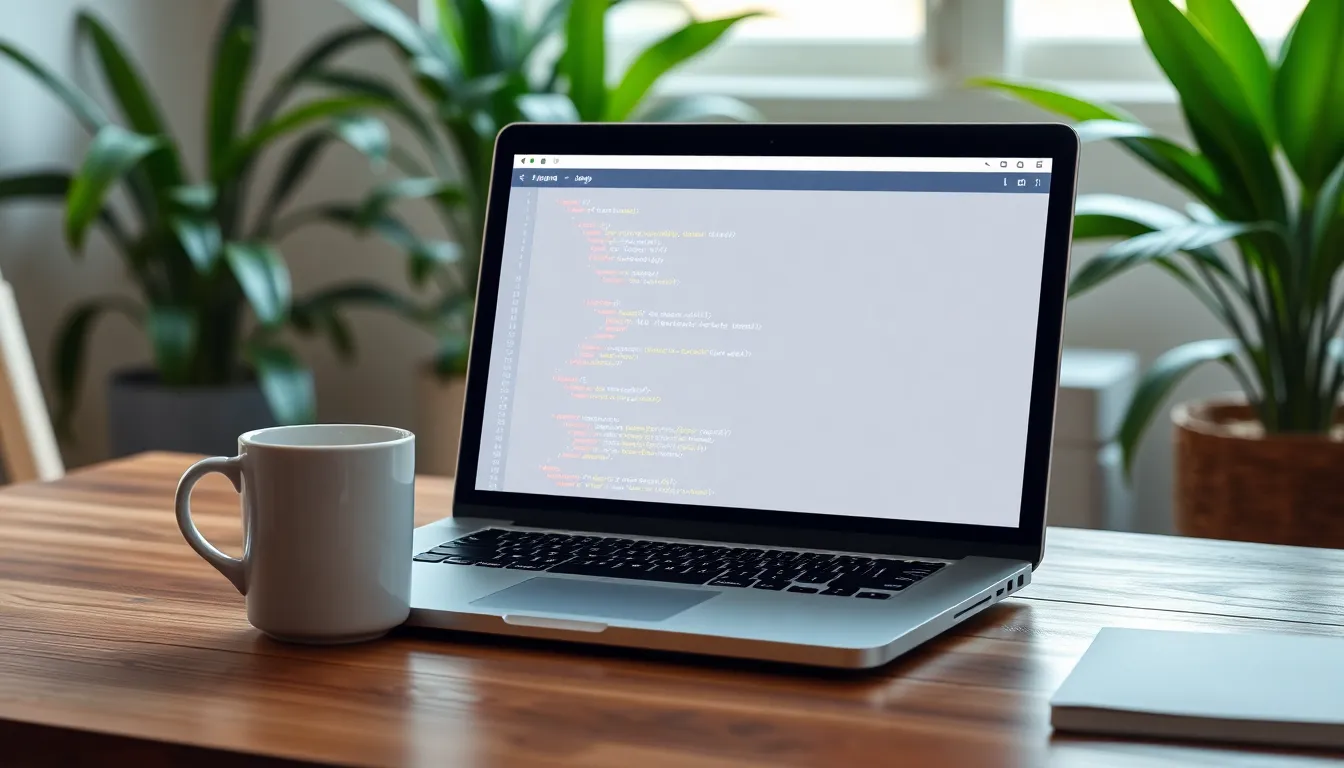Calling a function in JavaScript might seem as tricky as deciphering hieroglyphics, but it’s far easier than it looks. Imagine functions as little chefs in your code kitchen, ready to whip up a delicious dish whenever you need them. With just a simple command, you can summon these culinary wizards to serve up the functionality you crave.
Table of Contents
ToggleUnderstanding Functions in JavaScript
Functions play a crucial role in JavaScript by enabling code reuse and modularity. They define reusable blocks of code that perform specific tasks.
Defining a Function
Defining a function involves using the function keyword followed by a name and parentheses. Inside the parentheses, developers can include parameters, which act as placeholders for input values. The body of the function contains the code that executes when the function gets called. For example:
function greet(name) {
console.log("Hello, " + name + "!");
}
This code snippet defines a function called greet, which takes a single argument, name. When called, it prints a greeting message.
Function Expressions vs. Function Declarations
Function expressions and function declarations differ in how they are defined and used. A function declaration, like the previous greet example, stands out because it’s hoisted, allowing calls before its definition. On the other hand, a function expression creates a function as part of a larger expression. For instance:
const greet = function(name) {
console.log("Hello, " + name + "!");
};
This function expression assigns an anonymous function to the variable greet. Unlike declarations, expressions don’t hoist, which means calling them before their definition results in an error.
How to Call a Function in JavaScript

Calling a function in JavaScript requires simply using its name followed by parentheses. This action executes the code within the function.
Calling a Simple Function
To call a simple function, use its defined name along with parentheses. Functions like greet() invoke the code block where the function’s operations reside. The output occurs every time the function is called. For example, if a function prints a message, calling greet() will display that message directly on the screen. No additional syntax is necessary for this straightforward execution. Understanding this basic call structure signifies the first step in utilizing JavaScript functions effectively.
Calling Functions with Arguments
Functions can accept arguments, allowing them to operate dynamically based on given input. To call a function with arguments, simply include values within the parentheses. For instance, if the function greet(name) requires a name as input, invoking it as greet("Alice") passes “Alice” to the function. Consequently, the output adjusts according to these arguments, tailoring the message for that specific input. This flexibility illustrates the power of functions in managing varying data and generating customized outputs.
Common Use Cases for Function Calls
Function calls find application in various scenarios in JavaScript. They significantly enhance interactivity and code efficiency.
Event Handling
Event handling relies on function calls to respond to user actions. For instance, clicking a button can trigger a specific function that performs an action. Developers use event listeners, like addEventListener, to bind functions to events such as clicks or key presses. When a user interacts with a web page, the associated function executes, enabling dynamic behavior. This approach improves the overall user experience by providing immediate feedback based on user inputs.
Callback Functions
Callback functions facilitate asynchronous programming. They allow one function to execute only after another completes its operation. For example, making an API call often involves passing a callback function to handle the response. When the data is ready, the callback processes it, maintaining a smooth execution flow. This technique plays a vital role in tasks like handling user inputs, loading data, or executing operations that rely on timing.
Best Practices for Function Calls
Adopting best practices improves function calls in JavaScript. Two essential practices include following naming conventions and avoiding the global scope.
Naming Conventions
Naming functions clearly enhances code readability and maintainability. Developers prefer using descriptive names that indicate the function’s purpose, such as calculateSum for addition operations. Adopting camelCase formatting makes function names more accessible. For example, getUserInfo effectively reflects the action taken. Avoiding ambiguous abbreviations prevents confusion in larger codebases. Consistency in naming also fosters better collaboration among team members.
Avoiding Global Scope
Limiting access to the global scope prevents potential conflicts and bugs. Functions defined within a specific scope are easier to manage. Using closures or modules allows for better encapsulation and data protection. For example, wrapping functions in an immediately invoked function expression (IIFE) maintains cleanliness in the global scope. This practice reduces the risk of naming collisions, especially in larger code projects. Maintaining organized and clear scopes facilitates better debugging and enhances overall code reliability.
Mastering the art of calling functions in JavaScript is essential for any developer looking to create efficient and interactive applications. With a firm grasp of function definitions and the nuances of calling them, developers can unlock the full potential of their code.
By employing best practices such as clear naming conventions and limiting global scope access, they can enhance code readability and maintainability. As they continue to explore functions and their various applications, developers will find that these tools not only streamline their coding processes but also elevate the overall user experience. Embracing these practices will lead to cleaner code and more dynamic web applications.



